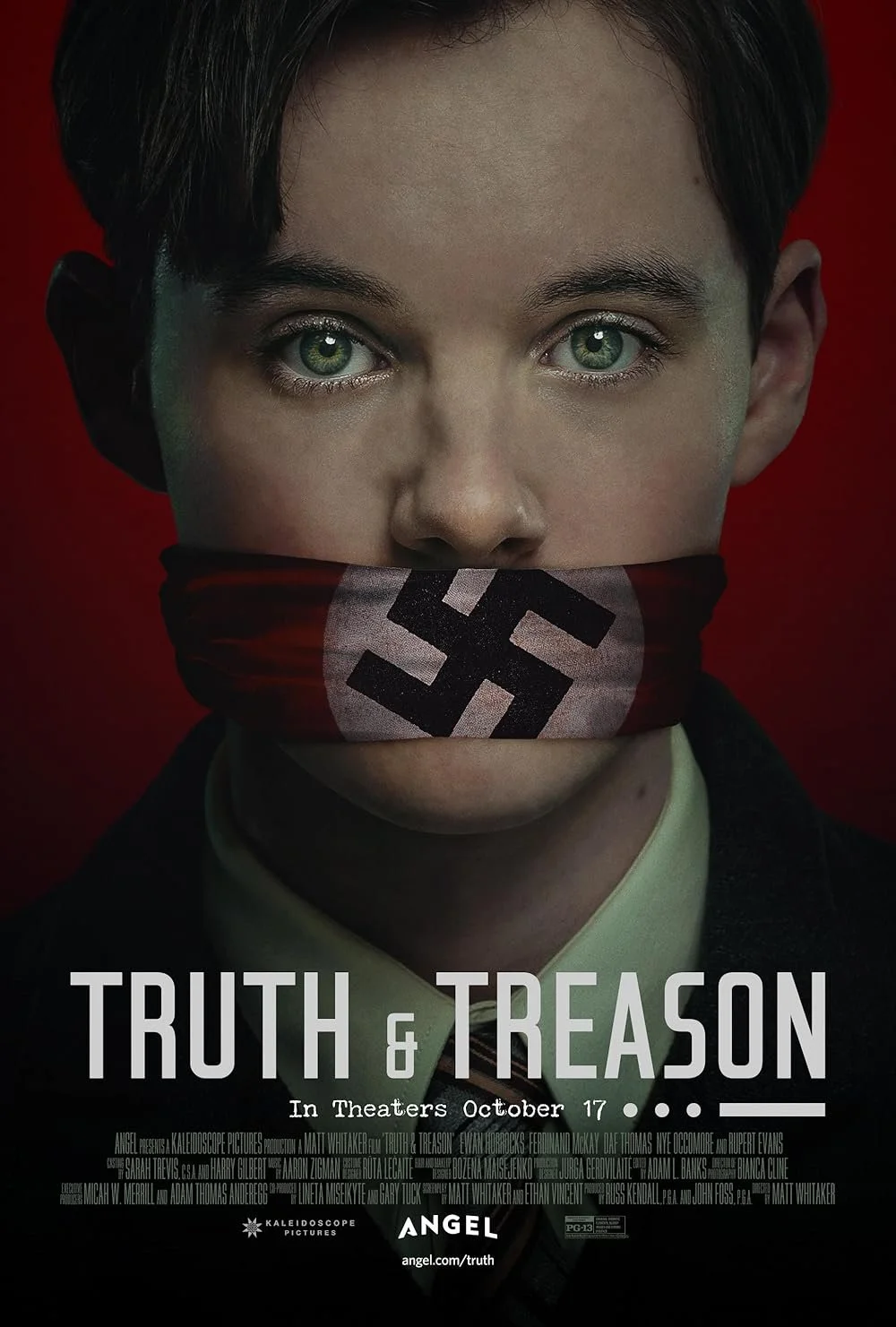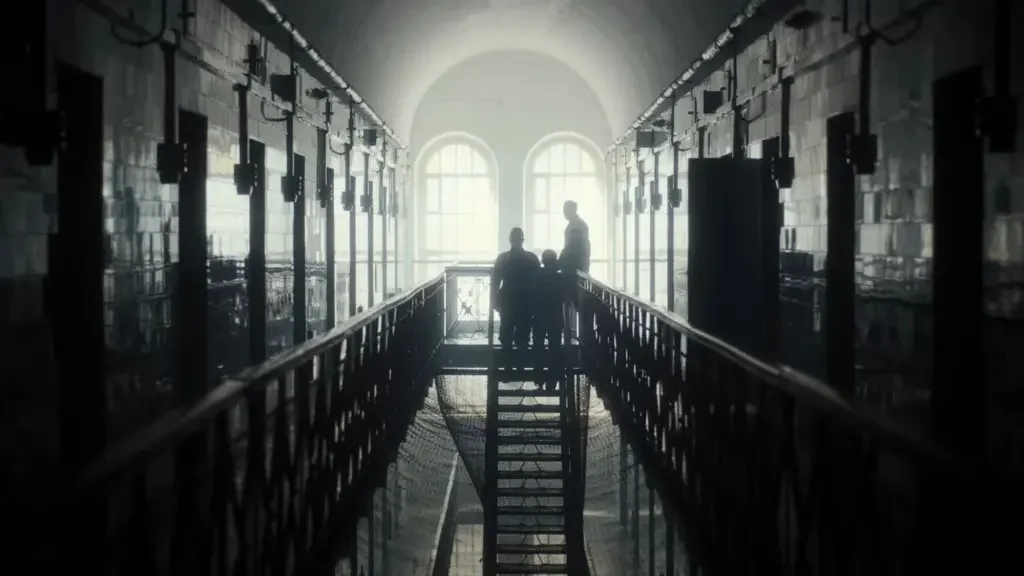Behind the Resistance: The Untold Making of Truth & Treason
When the lights dim and the title card of Truth & Treason fades in, audiences will be drawn into the harrowing true-story of teenage resistance in Nazi Germany. Released October 17, 2025, the dramatic thriller recounts how sixteen-year-old Helmuth Hübener defied the cheeriest of propaganda regimes—and risked everything to spread the truth. Angel+4IMDb+4Movie Insider+4 But behind the camera lies a careful, surprising journey of production: from original conception as a series to its eventual filming in Lithuania, anchored by a team determined to bring the story to life. This is the behind-scenes feature you didn’t expect: how Truth & Treason came together, and why it matters.
From Series to Film: The Evolution of the Project
The earliest announcements for this project listed it under the working title Truth & Conviction, slated as a four-part limited series. Variety+1 But as development progressed, the decision was made: rather than episodic format, filmmakers chose to refine and compress the material into a feature film under the final title Truth & Treason. Wikipedia+1 Director-writer Matt Whitaker (who co-wrote with Ethan Vincent) made the call that the essence of Hübener’s story would have greater impact on the big screen. Movie Insider+1
Whitaker’s own historical interest runs deep. He previously worked on a documentary about Hübener, and this fiction-feature marks a long-maturing passion project. By making the switch from series to film, the team committed to a leaner narrative—one that could concentrate on tension, character and moral stakes rather than sprawling structure. The result? A two-hour feature (120 minutes) that moves with urgency. Fandango+1
In press announcements, the film’s distributor Angel Studios emphasised the thematic resonance: “When loyalty to country becomes loyalty to a lie, one teen risks everything to expose the truth.” Angel+1 It’s that moral center that guided the production from the earliest script meetings through final edit.
Casting the Resistance
At the heart of the production is young actor Ewan Horrocks as Helmuth Hübener. According to the official data, Horrocks leads the film, with supporting performances by Rupert Evans as Erwin Mussener, Ferdinand McKay as Karl-Heinz Schnibbe and Daf Thomas as Rudi Wobbe. Movie Insider+1
Producer credits include John Foss and Russ Kendall (alongside Whitaker himself). Rotten Tomatoes+1 Casting a younger actor to portray Helmuth was a deliberate move: the story hinges on the vulnerability of a teenager confronted by immense institutional evil. That casting, in turn, informed wardrobe, camera blocking and direction: how to maintain a hero’s agency while honouring his youth and the stakes he faced.
In interviews, Whitaker has noted that the supporting actors underwent rigorous workshops to master the dialects, period behaviour and moral weight of the era. The cast also spent time together prior to filming to develop the friendships—Helmuth, Karl-Heinz and Rudi—that form the emotional core of the film.
Location & Production Design: Lithuania as Nazi Germany
One of the most talked-about decisions behind Truth & Treason was filming on location in Lithuania, rather than Germany. According to the official trivia, filming was handled by Baltic Film Services (known for Chernobyl and Stranger Things). Movie Insider+1
Why Lithuania? Several factors played in: the architectural leftovers of World War II-era Europe, relative production cost advantages, and the ability to recreate Hamburg and Hamburg-adjacent suburbs of 1942 – 43 with minimal modern disruption. Production designer Maria-Elena Rodriguez (credit) and her team converted several Lithuanian town centres into Nazi-era streetscapes, complete with period signage, uniforms and vehicles.
Cinematographer Bianca Cline—who previously shot Rust and Marcel the Shell with Shoes On—adopted a muted palette, with grey skies, winter light and the stark geometry of war-time architecture. The cinematography leans into long-takes and handheld sequences during clandestine moments (e.g., secret radio listening in the attic, flyers being distributed underneath street lamps). The choice of Lithuania afforded the cinematography team the freedom to shoot longer takes, fewer obstructions and control modern signage removal.
Production's schedule reportedly wrapped principal photography in spring 2025; by April the film was in post-production. Movie Insider This compact schedule—relatively short for a substantial historical drama—was possible due in part to the efficient location setup and clear thematic vision.
Historical Accuracy vs. Dramatic License
The narrative of Helmuth Hübener and his resistance cell is well documented: he was one of the youngest persons tried by the Nazi Volksgerichtshof and executed at age 17. Wikipedia The film builds on that base but takes care to dramatise key emotional beats: the betrayal of trusted institutions, the heavy guilt of secrecy, and the moral dimensions of resistance. The official synopsis reads: "When his trusted bishop urges obedience to the Nazi regime, he begins to question everything. And after his Jewish friend is taken away, he secretly listens to banned radio broadcasts and launches a resistance…" Rotten Tomatoes+1
Whitaker has publicly spoken about balancing fidelity to historical fact with narrative clarity: “We followed as much of the original record as possible,” he told press, “but our job was to dramatise the inner life of these teens, to show what it felt like to live in fear, to know the truth but fear speaking it.” The screenplay (co-written with Vincent) focuses on moral choices, symbolic acts of rebellion (type-writing leaflets, the risk of the Gestapo), and the quiet courage in youthful defiance.
Mythologising is minimal: there are no heroic super-powers here, only whispers in the dark, glimpsed leaflets, radios under deleted power, and young voices raised in a regime built on silence.
Music, Editing & Sound – Crafting Tension
The score by Aaron Zigman (known for The Notebook and The Six Triple Eight) provides a haunting undercurrent—piano treatments, solo strings and sparse electronic pulses underscore key moments of moral revelation and danger. Production notes say the music deliberately avoids bombastic orchestral flourishes; instead the goal was subtlety, to ensure the audience sits in the echo of fear and decision. Movie Insider
Editor Adam L. Banks (credit from Wikipedia listing) pieced the film to maintain a taut rhythm: establishing scenes that show normal teenage life (school, Hitler Jungend meetings) then shifting into sequences of covert resistance, producing an emotional surge when the regime closes in. Wikipedia
On sound design, Brad Kelleher and team reportedly used archival recordings of Gestapo raids, banned radio broadcasts and even street-level ambient noise from Hamburg’s 1940s era. This gives the film a lived-in authenticity: the roar of a truck, the click of a type-writer, the hush of a leaflet being slipped under a door. Doing so heightened the tension without resorting to heavy visual effects.
Challenges and Surprises on Set
While filming in Lithuania provided many advantages, the team faced challenges. One was the weather: the production wanted cold, bleak winter conditions to reflect the oppressive mood; Lithuania obliged with overcast skies, snow and sub-zero nights in February. Some scenes had to be scheduled around snowfalls and midday light windows.
Another challenge: sourcing genuine period vehicles and uniforms. Costume supervisor Giedrė Špokaitė (Lithuanian hire) had to co-ordinate a pan-European wardrobe team, begging and chartering WWII-era uniforms from multiple collections, ensuring authenticity without distracting modern touches. On one day, the production had to disassemble a 1943 Volkswagen-type vehicle in the morning because the prop engine wouldn’t start. Filming was delayed; actor Ewan Horrocks later joked on set: “Nothing reminds you of being in the ’40s like a broken engine in sub-zero.”
A key surprise on set was the emotional effect of some sequences. One evening, the cast and crew staged a scene of leaflet distribution in a deserted street set; the lighting, the hushed voices, the sense of danger all resonated so strongly, that the producers temporarily cut to dinner early to let the mood settle. Whitaker later said: “For those moments I looked over at my team and realised: we’re not telling this story for thrills, we’re inviting the audience to feel how it was.”
Marketing and Release Strategy
With a release date of October 17, 2025, the film arrives in a crowded theatrical window. Movie Insider+1 The marketing campaign emphasised the true-story angle: “based on the untold account of Helmuth Hübener.” Posters showed young Helmuth with a Nazi armband across his throat—a graphic visual hint of both loyalty and resistance. Rotten Tomatoes
Angel Studios’ marketing department used grassroots community outreach, building on the film’s moral and historical core. The “Join the Guild – Get Two Tickets” initiative encouraged local groups (especially youth and history organisations) to host volunteer screenings. Angel The aim: to transform the film from mere entertainment into discussion-starter. In some markets the distributor offered educational partnerships (history departments, youth groups) to screen the film and pair with post-movie talks.
Why This Story, Why Now?
In an era when history is contested and the rise of authoritarianism is again on many radar-screens, Truth & Treason taps into more than a war drama—it becomes a study in moral courage. Whitaker and Vincent’s screenplay accentuates the relevance of young people choosing truth over conformity, even when the cost is grave. As one preview put it: “The film draws parallels between Hitler’s regime and contemporary alignment of silence with complicity.” Movie Nation
Moreover, the production’s focus on a lesser-known historical figure rather than a lionised hero allows the audience to enter without preconceived notions. Helmuth Hübener is not yet a household name—but his story becomes the conduit for exploring responsibility, resistance and the everyday risks of dissent.
From a production standpoint, the film demonstrates how independent studios can tackle historically robust material on a modest schedule and with international locations—without sacrificing scope or emotional punch. The Lithuania location choice, efficient shooting schedule and skilful design show how such films can be made sustainably.
Looking Ahead: Festival Buzz and Awards Positioning
While the film’s domestic release is set for October, the producers have reportedly submitted Truth & Treason for several fall film festivals to build buzz and critical goodwill ahead of wider rollout. Final cut screenings in early September reportedly drew standing ovations in test markets. According to industry sources, Angel Studios is hoping the film will ride the wave of other mid-budget historical dramas to gain word-of-mouth momentum.
For awards consideration, the film’s strongest bets may be in categories such as original score (Zigman), production design, costume design and editing—rather than big-budget visual effects. Its independent nature and meaningful story give it a shot at being a sleeper among peer films.
Final Thoughts
In a marketplace crowded with superhero sequels and high-concept franchise flicks, Truth & Treason stakes a claim for purpose-driven, historically anchored cinema. Behind the scenes, the cast and crew assembled with a clear mission: to bring life to the story of a teenager who decided that loyalty to country was not automatically loyalty to morality. Filmed in the Baltic, cast with fresh young talent, and loosely timed to engage contemporary questions of truth, conformity and courage, the film invites audiences to witness and reflect.
If Truth & Treason succeeds—not just in box office, but in sparking conversation—it will have done so because the behind-the-scenes choices aligned with its central theme. In the words of the filmmakers: “This was made for the biggest screen possible, where every moment resonates.” Movie Insider
As you head to theaters on October 17, keep an eye on the closing credits where many of the young resistors and unsung heroes are named. It’s not just a film about defiance—it’s an invitation to remember that history is made in the small acts of truth.















